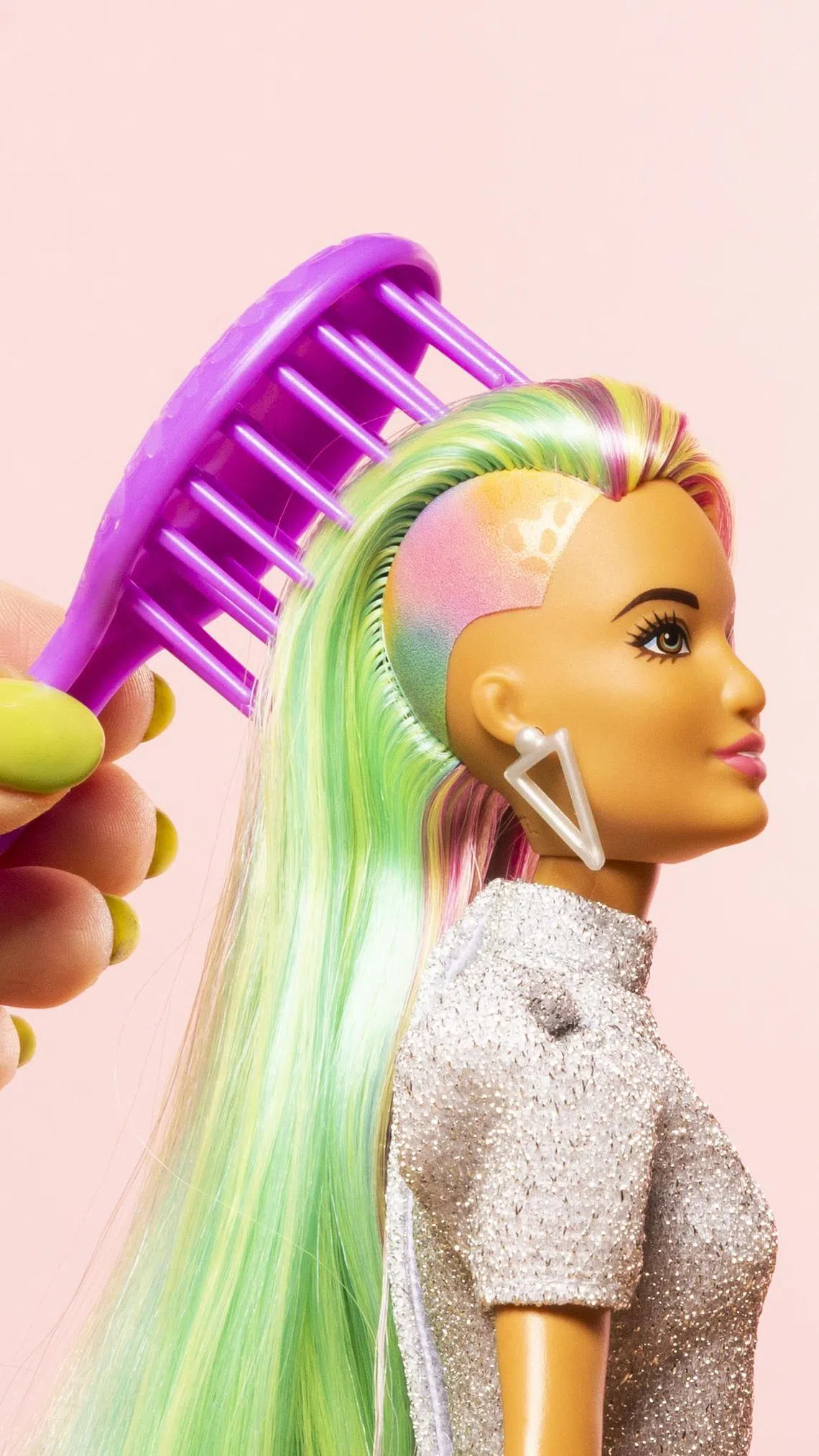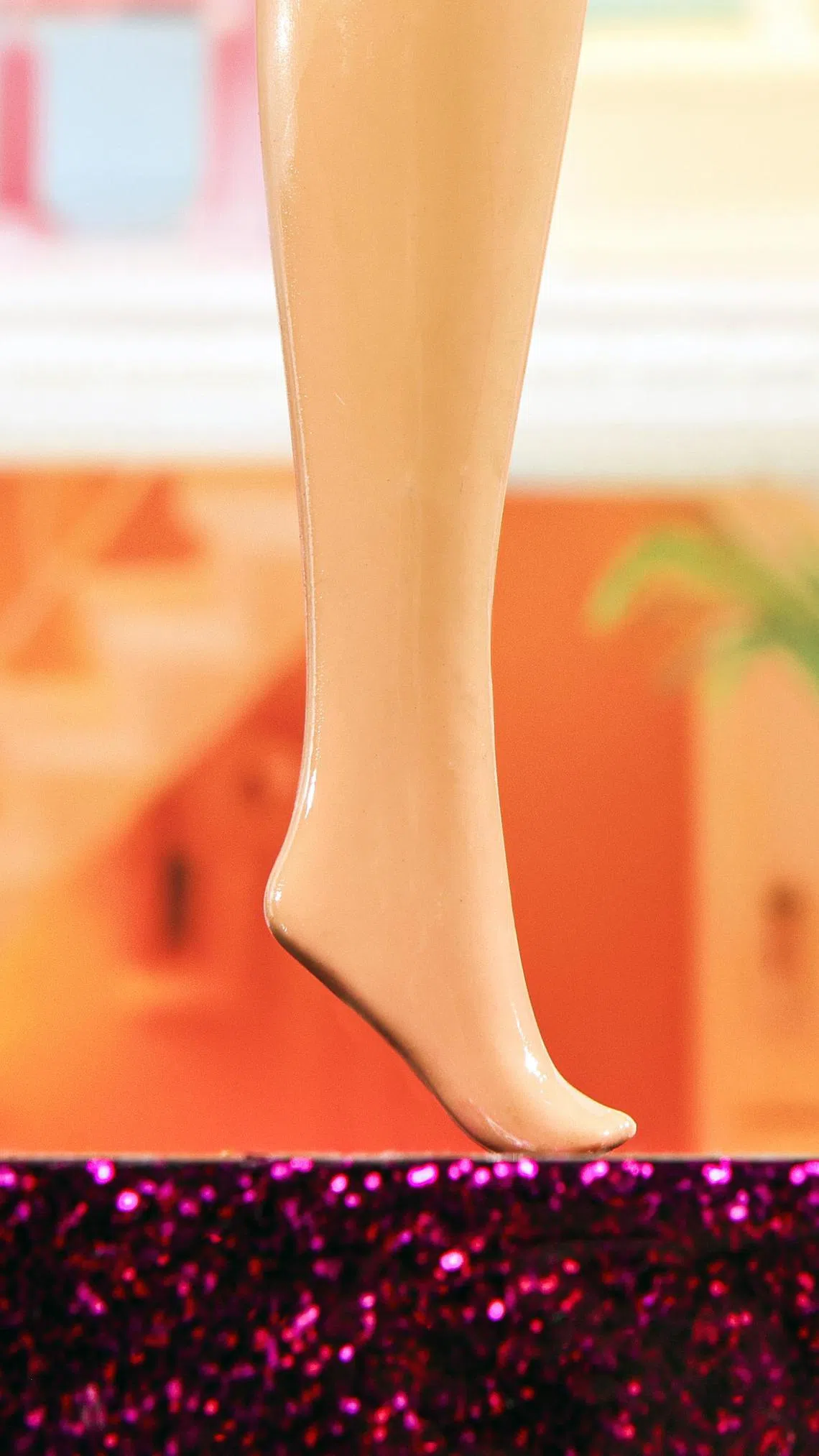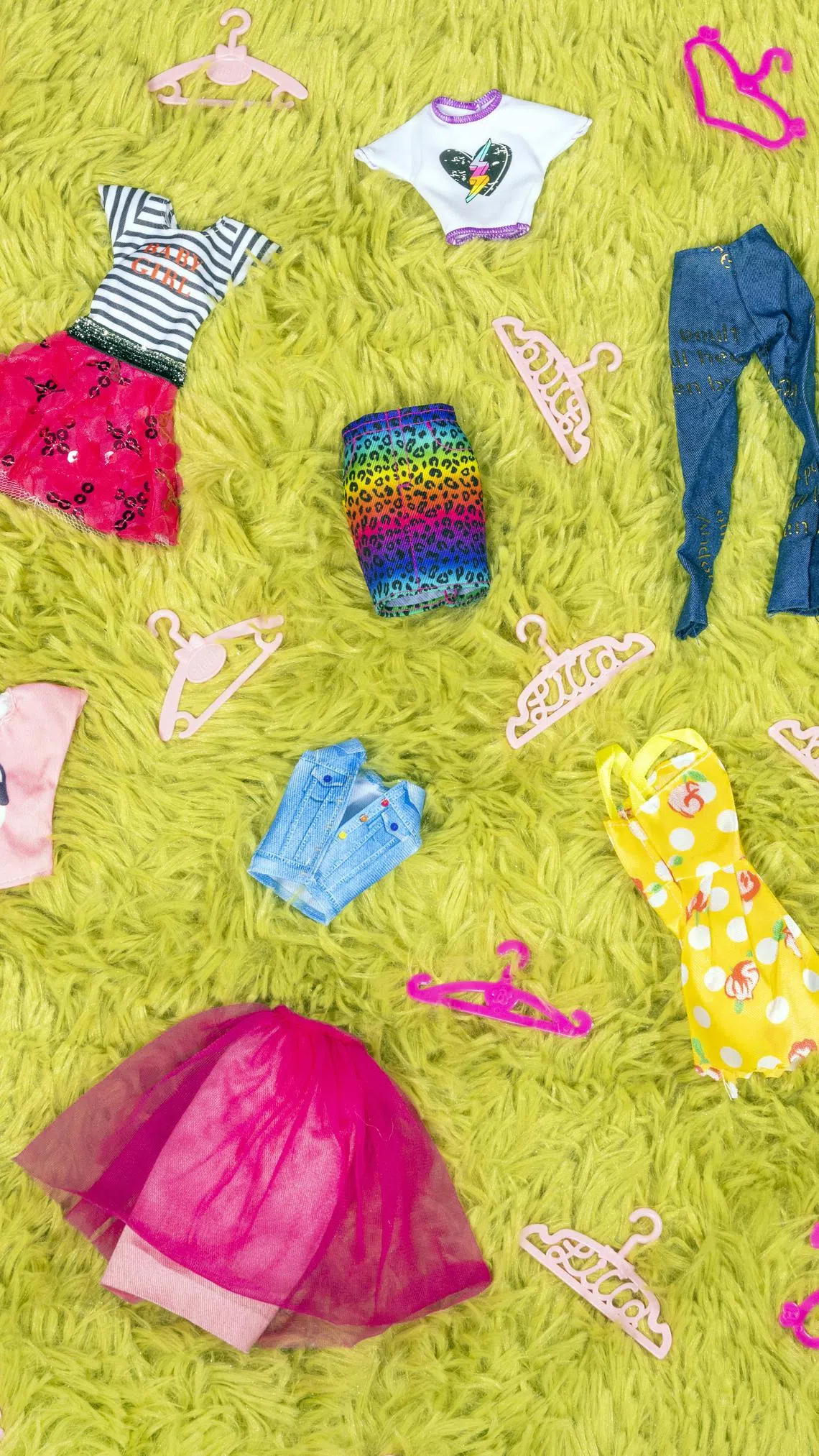From head to toe, what makes Barbie Barbie
Sign up now: Get ST's newsletters delivered to your inbox

While the things that make Barbie Barbie may get a face lift every few years, the DNA remains unchanged.
PHOTO: NYTIMES
Follow topic:
NEW YORK – Maybe you have heard there is a Barbie movie coming out?
Well, this is not about that. It is, however, about the 29cm of intellectual property that inspired all the madness – the doll itself.
You know the one. Often blonde, always smiling, occasionally naked and neglected at the bottom of a toy chest? According to Mattel, more than 100 dolls are sold every minute, and quite a few minutes have elapsed since Barbie made her debut, at a toy industry trade show, in 1959.
Just as remarkable as the ways the doll has changed since then are the ways it has not. Like the characters on Sesame Street or South Park, Barbie exists alongside humanity without quite ageing with it – reflecting its times, but not its wrinkles.
That adaptive consistency may play a role in maintaining her cultural ubiquity, for while the things that make Barbie Barbie may get a facelift every few years, the DNA remains unchanged.
From her hair to her feet, from her portfolio of properties to her fleet of automobiles, practically everything in Barbie’s tiny plastic world bears her unmistakable signature. How? It is all about the visuals.
Her hair: Turns out, it does not grow back

If a hairstyle has been in vogue, there is a good chance that Barbie has at least tried it.
PHOTO: NYTIMES
Since Barbie first hit the market, rocking a ponytail and curly micro-bangs, her hair has undergone countless changes – from her feathery bouffants and bobs of the 1960s to her “flip” styles of the 1970s. Today, you can find Barbies with different updos, highlights, Afros and a range of hair textures. If a hairstyle has been in vogue, there is a good chance that Barbie has at least tried it.
Obsession with the doll’s hair reached a peak in 1992, the year Mattel released Totally Hair Barbie, whose 29cm of crimped hair fell down to her toes. According to Mattel, it remains the best-selling Barbie in history.
But for all the variety in Barbie’s hair over the decades, nothing came close to the at-home customisation children would give to their dolls. There exists a venerable tradition of cutting it with a pair of scissors, often leaving her ends frayed and uneven. Some children would apply paint or a Kool-Aid drink to her tresses – a de facto form of hair dye – or dip them in hot water in an attempt to form curls. Plenty of people can say they first learnt how to braid or make a ponytail using their Barbie dolls as practice.
Her feet: Living life on tiptoe

Barbie’s feet looks as glamorous as it is unnatural, and spawned an Instagram trend in 2018.
PHOTO: NYTIMES
One needs only to see a perfectly pointed foot, positioned to fit neatly into a high heel, to know it belongs to Barbie. The doll’s feet spawned an Instagram trend in 2018 and, in the first shot of the trailer for the Barbie movie, star Margot Robbie steps out of a pair of pom-pommed stilettoes onto the ball of her foot, her heel still suspended in air. It is a look as glamorous as it is unnatural. While promoting the film, Robbie explained that to get the shot, she had to hold on to a bar to keep her balance.
While a Barbie from the 1970s could wear flats as well as heels, Barbies who could wear flats did not become mainstream until 2015, when Mattel released a line of dolls with ankles that could be manipulated to fit into flat shoes. Some saw it as a sign that Barbie was modernising, moving away from outdated standards of femininity.
Her figure: Proportional misrepresentation

The more you look into Barbie’s proportions, the clearer it becomes that she is unlike anything ever made in nature.
PHOTO: NYTIMES
Is there anything more symbolic of all that is surreal about Barbie – the way the doll gave young women a twisted idea of the perfect body, the way she represented female reality distorted by male fantasy (she was based on a German doll meant to be enjoyed at bachelor parties) – than her measurements? Her pneumatic bosom, teeny waist, blossoming hips and endless legs are just the most obvious distortions. The more you look into her proportions, the clearer it becomes that she is unlike anything ever made in nature – even Margot Robbie.
Indeed, there have been various efforts to scale her up to adult size, simply to reveal the impossibility of her body shape, which originally clocked in at about 39-18-33 inches. In a 1995 article in the International Journal Of Eating Disorders, researchers calculated that to attain Barbie proportions, a healthy adult woman would have to “increase 24 inches in height, 5 inches in the chest and 3.2 inches in neck length, while decreasing 6 inches in the waist”.
Ten years ago, addiction-treatment website Rehabs.com issued a report that examined Barbie’s effect on young girls’ body image, noting that the odds of finding someone with the doll’s chest-to-waist ratio were in the billions. The neck of a life-size Barbie would be too thin to support her head, and her torso would have room for only half a liver.
Barbie got a new body in 1998 – slightly wider waist, and smaller chest and hips. By 2016, Mattel had caved to pressure and offered petite, tall and curvy Barbies.
Her man: The original boy toy

Barbie’s boyfriend Ken has entered the public imagination as a benevolent himbo, a chisel-jawed foil to her dynamism and curves.
PHOTO: NYTIMES
Barbie’s ultimate accessory is her man. Since Mattel’s introduction of the Ken doll in 1961, Barbie’s boyfriend has entered the public imagination as a benevolent himbo, a chisel-jawed foil to her dynamism and curves. Their relationship is sexless (neither has genitals) but supportive. In early promotional images, Barbie occupies the foreground, while Ken stands behind her to carry a bag or offer her a flower.
Ken arrived two years after Barbie, a literal afterthought. The original doll was a slim blond who wore skimpy red swimming trunks. He beefed up as he tried on the styles of each decade. In the 1970s, there was Sport & Shave Ken, who had bulging forearms and a five o’clock shadow. By the 1990s, Ken had a Harley-Davidson bike.
In 2017, amid flagging sales, Mattel released a suite of Kens of various races, body shapes and hairdos – one had a man bun.
Depending on whom you ask, Ken may be the epitome of emasculation, an all-American sex symbol, a feminist fantasy or a gay icon. He is all of this while still being secondary to Barbie. “She’s everything,” the poster for the Barbie movie reads. “He’s just Ken.”
Her wardrobe: A clotheshorse with room to gallop

More than one billion outfits have been made for Barbie and her clan, estimate toymaker Mattel.
PHOTO: NYTIMES
Barbie made her entrance into the world in a knit, black-and-white-striped, strapless one-piece swimsuit, but even back then, she had other outfits – 22 of them, in fact. Over the years, she acquired clothes almost as quickly as she was acquired. Mattel estimates that by this point, more than one billion outfits have been made for Barbie and her clan, using more than 96 million metres of fabric.
Her wardrobe has been a mirror held up to the most identifiable trends over the decades – a sleeveless blouse and pencil skirt in the 1960s, a bandana print halter-neck maxi dress in the 1970s, an aerobics-ready purple leotard and matching leg warmers in the 1980s – and to people’s sense of self. Barbie always dressed the parts one allowed oneself to imagine – from debutante to doctor. Her outfits helped keep her relevant.
Little wonder fashion loves her. Dozens of designers have done special Barbie collaborations, starting with Oscar de la Renta in 1985. There have been Bob Mackie Barbie (1990, in gold paillettes and white marabou stole), Dior Barbie (1997, complete with throwback New Look jacket and skirt), Diane von Furstenberg Barbie (2006, wearing a signature pink-and-white wrap dress and toting a wheelie bag) and Moschino Barbie (in 2015, with faux leather outfit), to name a few.
In 2009, for Barbie’s 50th birthday, 50 designers created life-size Barbie-inspired looks for a special runway show at New York Fashion Week. In 2019, Barbie was given the Board of Directors’ Tribute by the Council of Fashion Designers of America – an award that had previously been bestowed on former United States first lady Michelle Obama and American journalist Gloria Steinem. Why? Well, Barbie may not be humankind, but her wardrobe is. NYTIMES

